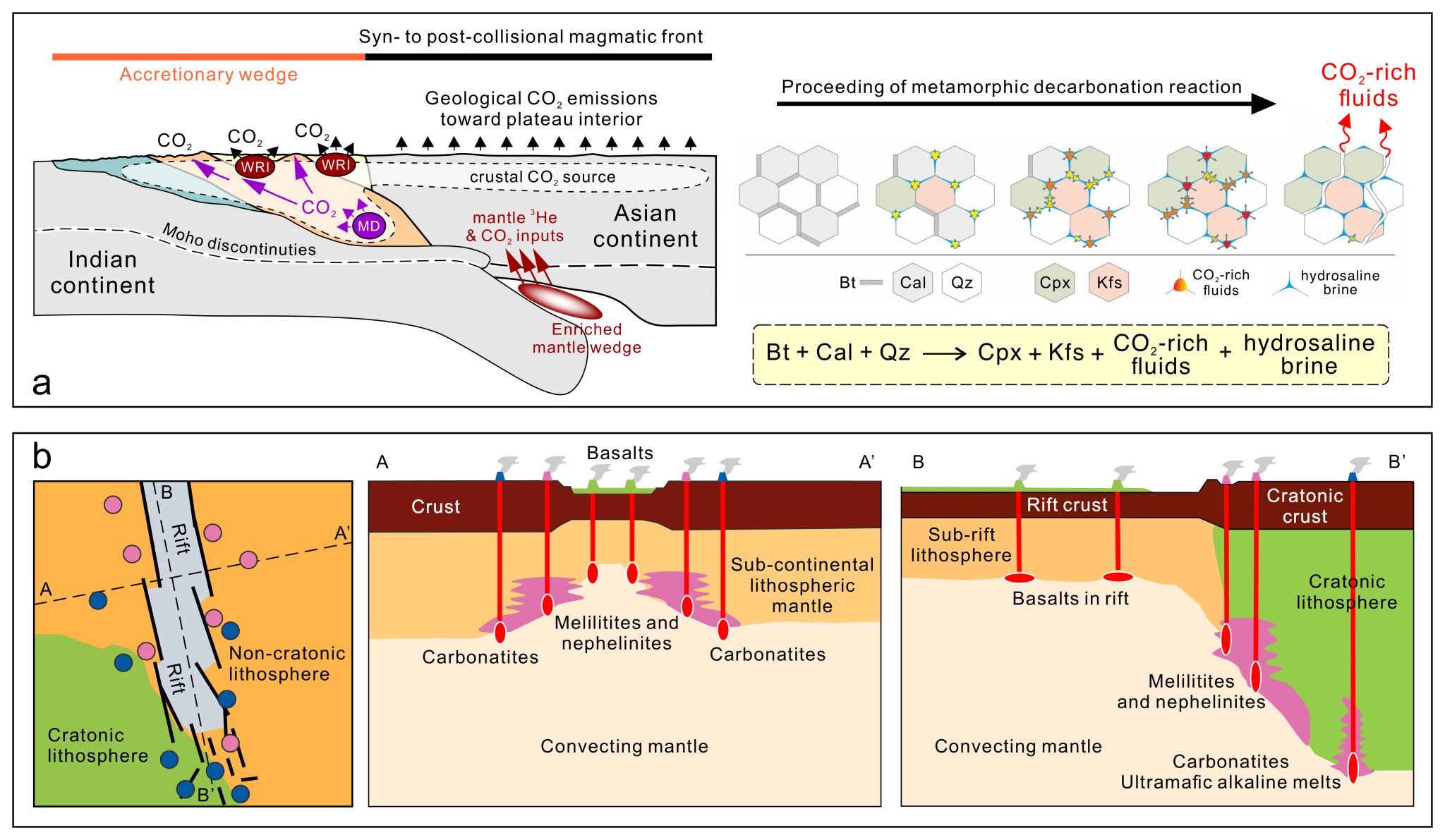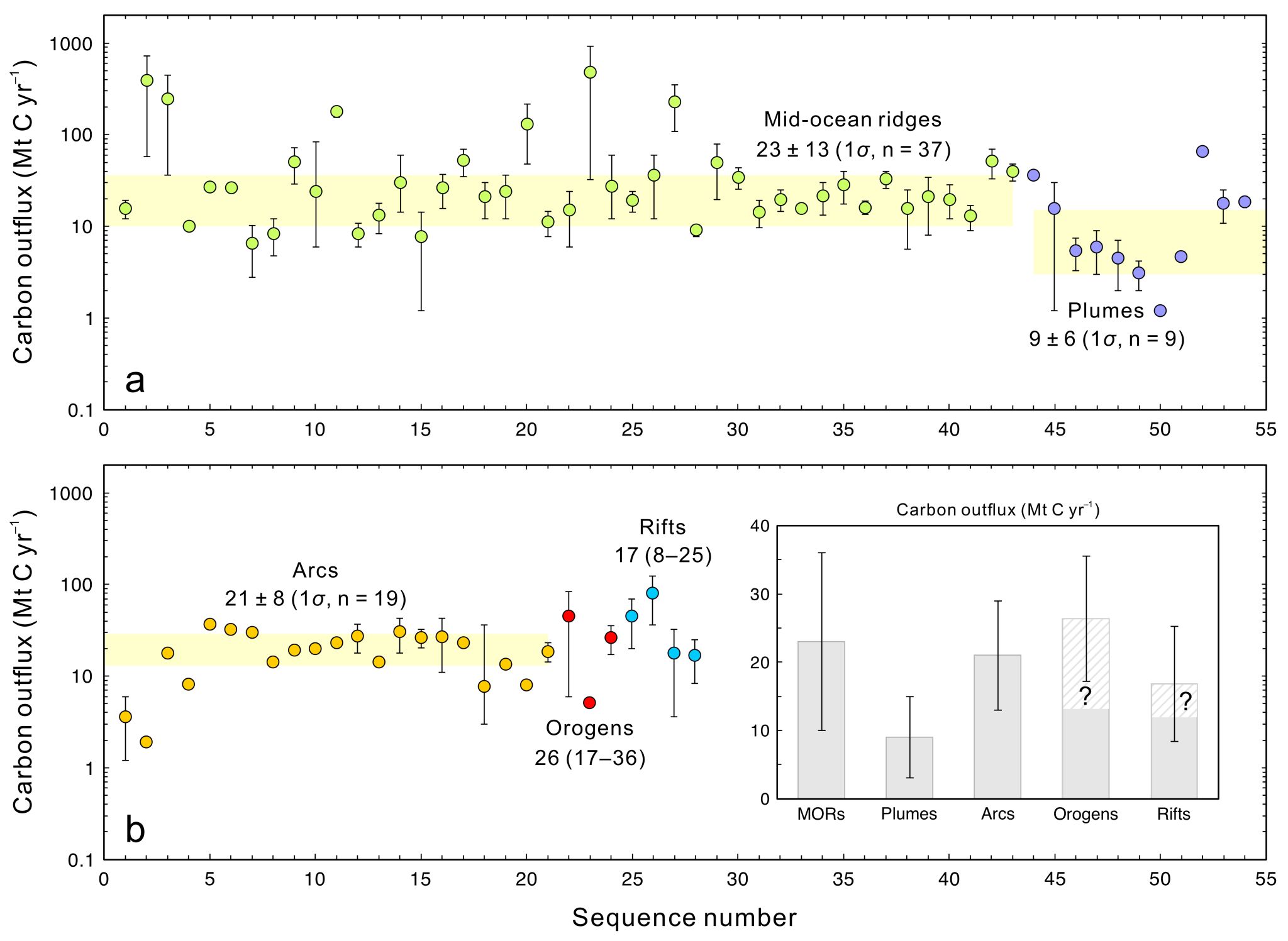Plate tectonics plays an essential role in the redistribution of life-essential volatile elements between Earth’s interior and surface, whereby our planet has been well tuned to maintain enduring habitability over much of its history. How does the deep carbon recycling operate in the regime of global plate tectonics? How does deep carbon affect the Earth's surface carbon cycle and its habitability? These important issues have long been research hotspots in the field of carbon cycle and global changes. Therefore, clarifying the mechanism of deep carbon recycling and the flux of its complete path from the perspective of global plate tectonics is of great significance for revealing the impact of coupled deep-surface carbon cycling on global changes.
Professor Sheng Xu’s group from the School of Earth System Science at Tianjin University collaborated with Professor Yuji Sano from Kochi University and published a review article titled "Deep carbon recycling viewed from global plate technologies" in National Science Review. The research team focuses on the deep carbon recycling driven by global plate tectonics and its importance to the evolution of a habitable Earth. From the perspectives of reservoir, flux, and mechanism, the carbon cycling processes between the deep and surface Earth systems are sorted out. The similarities and differences in deep carbon recycling of major tectonic settings, such as mid-ocean ridges, mantle plumes, arcs, continental rifts, and continental collisional orogens, are explored. The assessment of global carbon mass balance and uncertainty evaluation are conducted based on compilation of carbon flux data, and potential challenges and future research opportunities in the field of deep carbon recycling are also discussed.
The up-to-date flux compilation implies approximate balance between deep carbon outflux and subduction carbon influx within uncertainty but remarkably limited return of carbon to convecting mantle. If correct, carbon would gradually accumulate in the lithosphere over time by (i) massive subsurface carbon storage occurring primarily in continental lithosphere from convergent margins to continental interior and (ii) persistent surface carbon sinks to seafloors sustained by high-flux deep CO2 emissions to the atmosphere. Further assessment of global carbon mass balance requires updates on fluxes of subduction-driven carbon recycling paths and reduction in uncertainty of deep carbon outflux. From a global plate tectonics point of view, we particularly emphasize that continental reworking is an important mechanism for remobilizing geologically sequestered carbon in continental crust and sub-continental lithospheric mantle. In light of recent advances, future research is suggested to focus on a better understanding of the reservoirs, fluxes, mechanisms, and climatic effects of deep carbon recycling following an integrated methodology of observation, experiment, and numerical modeling, with the aim of decoding the self-regulating Earth system and its habitability from the deep carbon recycling perspective.

Fig. 1. Cartoon models showing the reworking of continental crust (a; modified from Zhang et al., 2021; Groppo et al., 2022) and sub-continental lithospheric mantle (modified from Foley and Fischer, 2017).

Fig. 2. Deep carbon fluxes of major plate tectonic settings
This study was supported by the National Natural Science Foundation of China (NSFC) (Grant 41930642) and the National Key Research and Development Project (Grant 2020YFA0607700).
Citation: Zhang, M., Xu, S., & Sano, Y. (2024). Deep carbon recycling viewed from global plate tectonics. National Science Review, in press, nwae089. https://doi.org/10.1093/nsr/nwae089